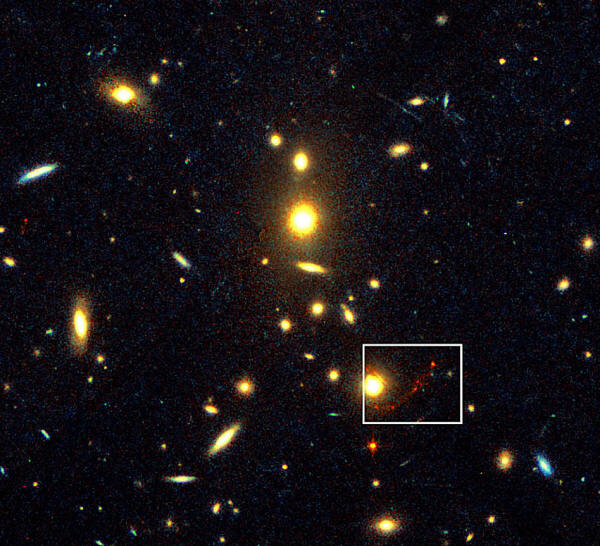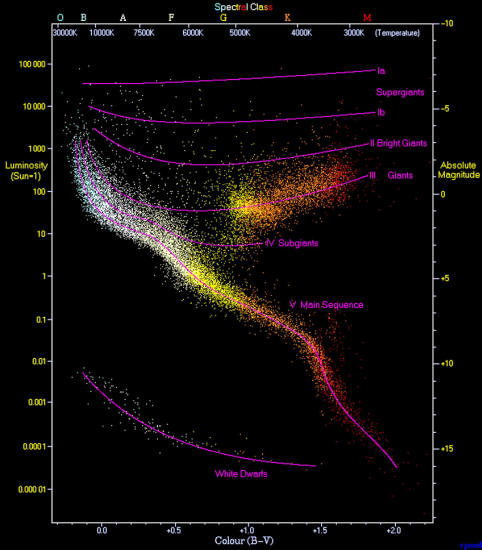|
by Stephen Smith
Italian version in the observable Universe: z = 4.92. Credit: M. Franx (U. Groningen) & G. Illingworth (UCSC), WFPC2, HST, NASA.
Modern theories propose that objects farther out in space are representative of the Universe as it was earlier in its life.
Galaxies located at 1.2 billion light years, for example, are thought to be as they were 1.2 billion years ago.
The presupposition
is that objects at that distance should be young, with rich supplies
of hydrogen fuel. In that case, the stars ought to be burning hot
and blue, radiating high frequency X-rays and extreme ultraviolet
light.
However, using data from the Chandra X-ray Telescope, many star clusters in remote galaxies are much too red for them to be so young.
As mentioned, current cosmological models rely on the Big Bang theory, so star clusters that are too red are thought to be unexpectedly metal-rich, or (surprisingly) that the models of stellar evolution are incorrect.
A third possibility is
that the theories are merely incomplete and not incorrect...
An observational Hertzsprung–Russell diagram with 22,000 stars plotted from the Hipparcos Catalogue and 1,000 from the Gliese Catalogue of nearby stars. Stars tend to fall only into certain regions of the diagram. The most prominent is the diagonal, going from the upper-left (hot and bright) to the lower-right (cooler and less bright), called the main sequence. In the lower-left is where white dwarfs are found, and above the main sequence are the subgiants, giants and supergiants. The Sun is found on the main sequence at luminosity 1 (absolute magnitude 4.8) and B−V color index 0.66
(temperature 5780 K, spectral type G2V).
That means that how stars appear when viewed through optical telescopes or X-ray detectors will not be dependent on age and distance, but on,
The greater the electric
charge, the hotter and brighter the star will appear.
The mass of a star and
its spectrum are thought to indicate its age, because the ratios of
different elements, according to theory, ought to provide an idea of
how long it took to convert its original mass into those other
elements.
That is said to cause fluctuations in output when temperatures change due to changes in fusion reactions.
Dr. Scott wrote:
So, there is nothing particularly out of the ordinary.
Stars merely obey another aspect of the cosmic energies that permeate the Universe:
It is possible that they are not as far away as they appear.
They may not be nearly as
old as astronomers think, because they do not behave according to
gravity and redshift theories but according to theories of plasma
cosmology...
|



